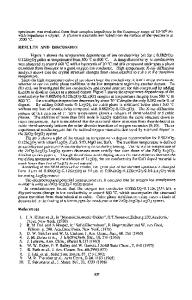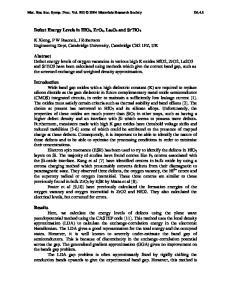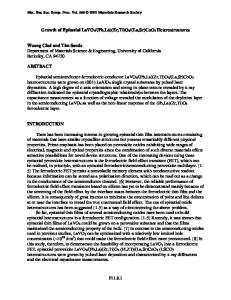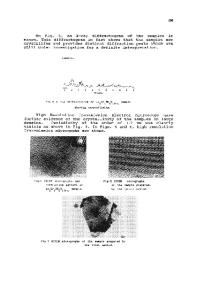Preparation and Evaluation of High-Purity La 2 O 3
- PDF / 1,108,840 Bytes
- 11 Pages / 593.972 x 792 pts Page_size
- 30 Downloads / 445 Views
INTRODUCTION
IN recent years, lanthanoids have been used as various functional materials, such as additives to iron, steel, ceramics, glass, and magnetic materials.[1–5] Among the rare earth elements, lanthanum has many industrial applications, such as a hydrogen storage alloy, NiMN batteries, and catalysts.[6–8] Recently, high-purity La of 99.999 pct or higher is required for several high-technology applications, such as ultra-large-scale integrated (ULSI) gate insulation film materials.[9–14] Therefore, it is important to reduce the impurity levels as much as possible. Unfortunately, the mutual separation of rare earth elements is very difficult because of their similar physical and chemical properties. Thus, the development of a purification process to obtain highpurity La was required. Among the many purification methods for rare earth elements,[15–18] extraction chromatography using solvent impregnated resins has been used as a separation method of rare earth elements as to new types of ion selective exchangers based on the solvent extraction.[19–24] In extraction chromatography, an organic extractant is supported on a suitable porous substrate. The retention of a solute depends on its distribution between the stationary phase of the solvent-impregnated resin and the mobile phase of the aqueous solution. A major advantage of extraction chromatography is that the extraction reagent can be minimized and stoichiometrically optimized for trace level separations in contrast to solvent extraction. GWANG SEOP LEE, Pos-doctor, MASAHITO UCHIKOSHI, Assistant Professor, KOUJI MIMURA, Associate Professor, and MINORU ISSHIKI, Professor, are with the Institute of Multidisciplinary Research for Advanced Materials, Tohoku University, Sendai 980-8577, Japan. Contact e-mail: [email protected]. Manuscript submitted June 8, 2009. Article published online February 19, 2010. METALLURGICAL AND MATERIALS TRANSACTIONS B
We previously investigated the solvent choice and preliminary separation method at low concentrations.[25,26] The di (2-ethylhexyl) phosphoric acid (D2EHPA) impregnated resin had better properties, such as sorption rate and separation factor, than the 2-ethylhexylphosphonic acid mono-2-ethylhexyl ester (PC88A) and trialkylphosphine (Cyanex 923) impregnated resins. The major impurities Ce, Pr, Nd, Sm, Zn, Al, Ca, and Fe were eliminated from La by extraction chromatography using a D2EHPA impregnated resin at a low La concentration. In addition, the adsorption behaviors of the examined elements on the D2EHPA impregnated resin were well explained by the mechanism of solvent extraction with D2EHPA. However, the majority of separation experiments have focused on the fundamentals, such as determination of separation and extraction parameters, or the evaluation of the kinetics and reaction mechanism at low concentrations.[20–26] Unfortunately, these studies were not suitable for application to industrial processing because it was not known whether the separation of impurities from La is possible at high La concentrations. In parti
Data Loading...











